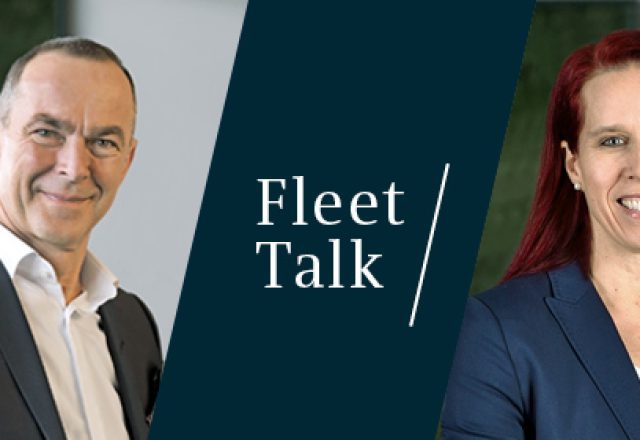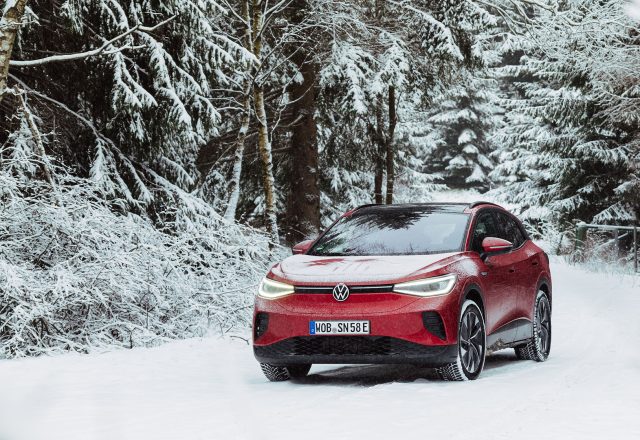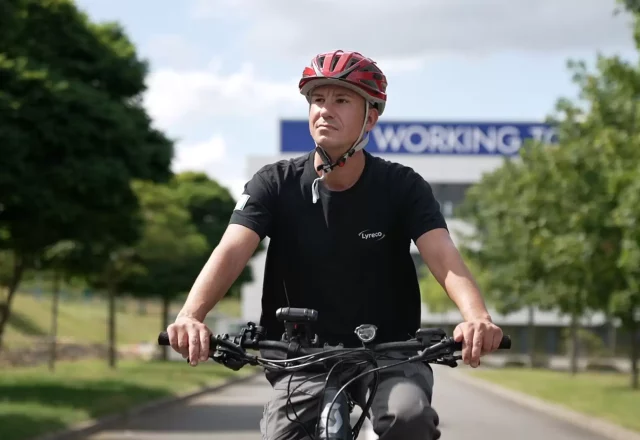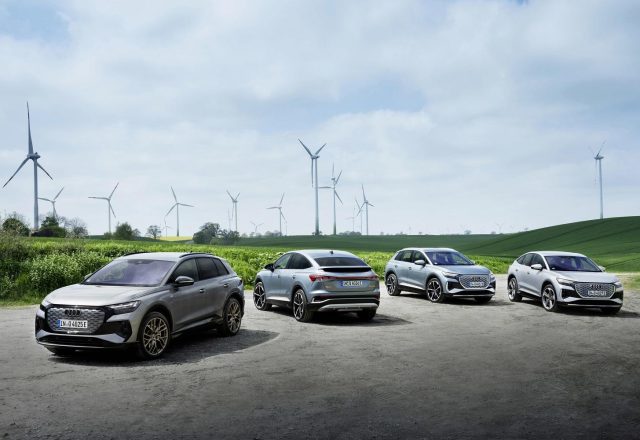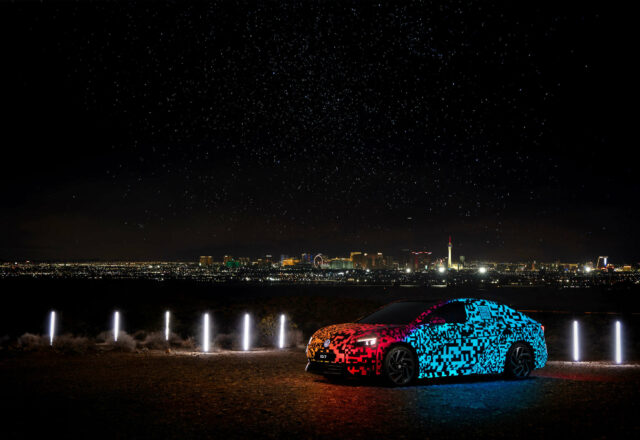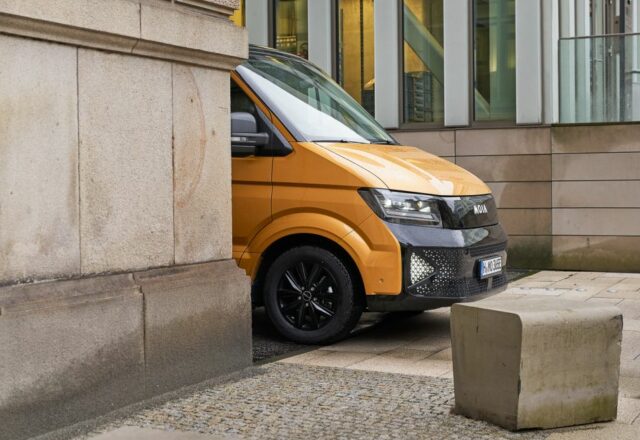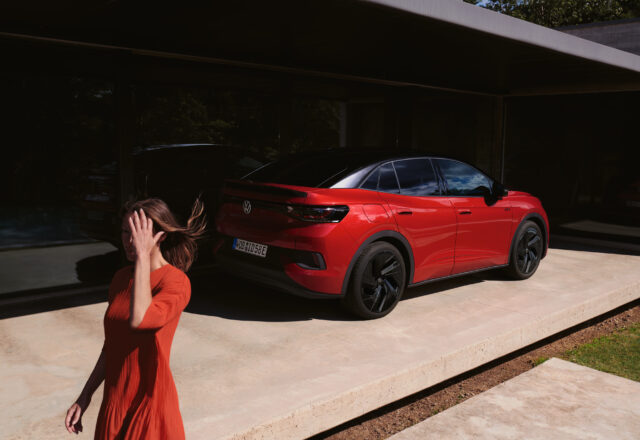From the coronavirus pandemic to raw material shortages – and in between a handful of rapidly evolving mega trends ranging from digitalisation to enhanced flexibility through to electrification. How can the mobility needs of customers and especially fleet customers be served in such dynamic circumstances.

To find out, we spoke to two experts from our own ranks: Anthony Bandmann (right), Member of the Board of Volkswagen Financial Services AG, responsible for Sales and Marketing and Sven Kunath, Senior Vice President Direct Fleet Europe.
Anthony, you have been responsible for sales and marketing at Volkswagen Financial Services AG for about a year now. Leaving aside the turbulent starting conditions for a moment: what goals have you set yourself in general?
I see my task quite clearly as being the voice of the customer in the company. There are three main aspects to this customer-centric approach for me. Firstly, that we understand the needs of the customer in detail and based on this always think in terms of the customer when it comes to products and services. Secondly, that we anticipate early on how customer needs will change in our volatile world and can respond with appropriate solutions. And thirdly, that we systematically exhaust every possibility offered by digitalisation in the sense of an enabler so to speak.
The coronavirus pandemic dictated our private and everyday business lives to a large extent last autumn. How is it possible to be the voice of the customer when it is not possible to visit the customer in person?
When the coronavirus emerged, I had just moved to the US to VW Credit Inc. And frankly, there were many question marks at first in view of the unclear situation. How can sales work without local contact? Ultimately, I spent 19 of my 26 months there working from home. And what can I say? It worked fine – just as it worked here afterwards in October 2021: by adjusting, finding new (communication) paths, using digital tools and continuing to nurture the customer relationship throughout. When you have never met your counterpart in person before, the situation is naturally infinitely more complicated. We all know that in a meeting, the ten minutes before and after the meeting count at least as much as the meeting itself. Our business was, is and will remain a people’s business. Nothing can replace human contact.
Sven, what is your experience of this topic, especially in relation to fleet business?
I agree totally with Anthony. The personal touch that our key account managers nurture with fleet customers is not only unbelievably valuable – it is also explicitly welcomed by our customers. Fleet managers want a contact who is accessible, provides solutions and on whom they can vent their displeasure face-to-face from time to time. Nonetheless, it must also be said that relationships with many customers interestingly became even closer during the coronavirus pandemic: because digital meetings immediately took you into the customer’s private space. A cat might run across the desk or the children peek around the door briefly – this would not have been possible in “analogue” key account management.
Anthony: Looking to the future, I think it would be the wrong move to return fully into the “old world”. We will retain the increased efficiencies that the coronavirus brought to processes – but without losing sight of the interpersonal sphere.

“The employees need to and also want to remain mobile in the future. And if this is not with their own company car, then with other mobility services that we will make as easily accessible as possible to them.”
Sven Kunath
Senior Vice President Direct Fleet Europe
Staying with the coronavirus: how did the pandemic impact the mobility needs of customers and, in this context, the services you offer?
Sven: Our conversations with fleet customers show that if employees work primarily from home then the company car naturally becomes slightly less relevant. But that does not mean, conversely, that company mobility becomes more unimportant – especially since we will hopefully not have another complete lockdown again as we did at the start of the pandemic. The employees need to and also want to remain mobile in the future. And if this is not with their own company car, then with other mobility services that we will make as easily accessible as possible to them.
Anthony: All in all it can be said that the coronavirus has accelerated existing trends in an unbelievable way. Using a car instead of buying it, designing your own mobility as flexibly as possible, accessing information from anywhere and concluding offers online – were it not for the pandemic it would certainly have taken several years for all of this to become established as a requirement on the part of the customer. Sven just said it: mobility services are an enormously important topic for the years ahead, both on a private and business level.

Anthony Bandmann
Member of the Board of Volkswagen Financial Services AG, responsible for Sales and Marketing.
Are you speaking here about the future mobility platform within the Volkswagen Group …?
Anthony: Quite correct. The idea behind this is that customers will no longer need to tediously search around for mobility services in different apps and offers. Instead, the Volkswagen Group brands will each make tailored mobility services accessible to customers via their own brand-specific app. Customers can then use these services entirely in accordance with their needs, combine them as they wish or also switch between them: from spontaneous ride hailing to car sharing for a couple of hours through to car subscriptions over several months. Our job as Volkswagen Financial Services is to develop the relevant platform jointly with the brands – naturally by focusing consistently on the demands of the respective clientèle. We will commence the initial pilots in the fourth quarter of this year in Vienna and at the start of 2023 in Hamburg.
Sven: All of this involves a two-phased approach: following on from the centralisation of services referred to by Anthony, the mobility platform will be supplemented – probably in the second half of the decade – by autonomous vehicles. This will increase interest again among corporate clients, in particular, because it will offer completely new opportunities for designing company mobility.
What role does Europcar play in this context?
Anthony: The Group set an extremely important milestone with the conclusion of the Europcar transaction. The Europcar Mobility Group will be the cornerstone of the new mobility platform with its dense network of stations at airports, railway stations and urban locations and its expertise in fleet management.
“Electric mobility has arrived and is here to stay – and, accelerated by current developments, will become more prominent.”
Anthony Bandmann
Member of the Board of Volkswagen Financial Services AG, responsible for Sales and Marketing.
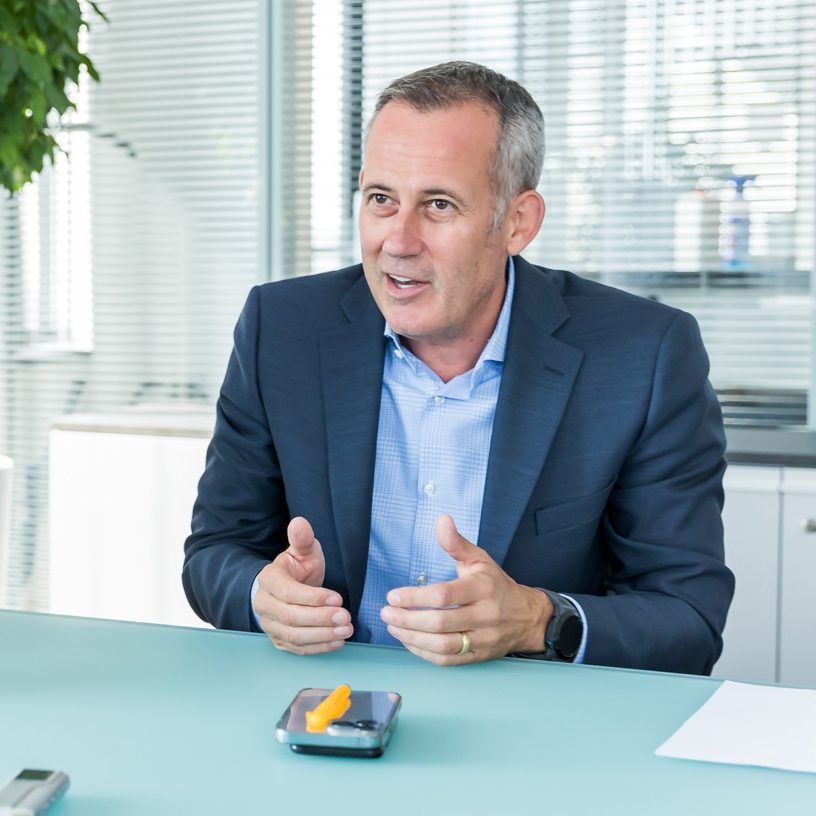
As we reach the end of our conversation, let’s switch focus again in the direction of electric mobility. Anthony, Sven: how much “drive” is there behind this topic at the moment?
Anthony: There is a lot being said and written at the moment about e-fuels etc. and while such synthetic fuels are naturally a good thing, they are more of an accompanying measure, a bridge to electrification so to speak. Let me put it as follows: electric mobility has arrived and is here to stay – and, accelerated by current developments, will become more prominent. The drive is therefore unbroken, both on the part of the company and on the part of the customer.
Sven: I can endorse that fully for the fleet business. Whether small and medium sized enterprise or large corporation, the topic of sustainability is now at the top of the agenda for practically every company – and this inevitably leads on to the topic of fleet electrification. It is therefore all the more important for us at this point to serve every customer individually because the requirements are naturally very diverse. Some companies come to us with specific ideas, having already given some thought to charging at the company’s location for instance; others in turn are approaching us for the first time: can I move to electric mobility at all with my driving profiles? We therefore support our fleet customers with our Electrification-as-a-Service approach as it is known. In other words, we offer them a central contact – and therefore reduce complexity for them in the three-way relationship between vehicles, charging infrastructure and digital services. We work with experts from the Group, such as Elli¹⁾, MHP²⁾ and others, to find the right solutions. This ranges from major issues like “What do I need to do to electrify a fleet in 23 countries” to details such as “How do I present my case to our purchasing department to show that e-bike leasing is a good fit for our company mobility?”. We consider customer-centric to mean supporting the customer in such matters in a tailored and above all holistic manner.
¹⁾Elli is a brand of the Volkswagen Group and a provider of energy and charging solutions.
²⁾A Porsche Company.
Stand: 26.09.2022
© Volkswagen AG

